Setting up a crate for your new puppy can be an essential part of their training and adjustment to their new home. With the right approach, you can create a safe and comfortable space that promotes security and helps establish positive routines. Here are some tips and best practices to ensure a smooth and successful puppy crate setup. In this blog we will learn about puppy crate set up so stay tuned till the last.
Meet: Portuguese Podengo
Part 1: Introduction to Puppy Crate Set-Up
A. Understanding Crate Training
Crate training is a method used to safely confine dogs in a designated space, usually while owners are away or during the night. The crate set up is a crucial step in ensuring the safety and well-being of your new labradoodle puppy or any other breed. The importance of crate training lies in its ability to manage the behavior of puppies, preventing them from developing undesirable habits. This training method offers numerous benefits, such as providing a safe haven for your dog and aiding in housebreaking, making it a popular choice among pet owners.
B. Choosing the Right Crate
When embarking on the crate training process, selecting the right crate is pivotal. There are various types of crates available, including plastic, wire, and soft-sided crates, each serving different purposes. Choosing the correct size is essential, allowing enough space for the puppy to stand, turn around, and lie down comfortably. Selecting the Appropriate Crate can provide more insights into size considerations and crate features like doors, locks, and dividers, which play a significant role in successful crate training.
C. Preparing for Crate Training
Before initiating crate training exercises, gathering essential supplies such as bedding, toys, and water bowls is necessary. Creating a positive association with the crate is vital, achieved by rewarding the puppy and introducing them to the crate gradually. Establishing a consistent schedule for crate time, playtime, and potty breaks is also crucial, helping the puppy adapt to a routine. For a more detailed guide on creating a positive environment and setting a schedule, refer to this Comprehensive Puppy Training Guide.
D. Common Mistakes and Solutions
While crate training, avoiding negative associations is crucial to prevent the puppy from feeling trapped or punished. Addressing common behavioral issues like whining and barking is essential to ensure the dog’s comfort and well-being in the crate. Balancing crate time with ample play, exercise, and interaction is necessary to avoid over-reliance on the crate and to keep the puppy happy and healthy.
E. Crate Placement
Identifying ideal locations for crate placement within the home is important, considering factors like traffic, noise, and family interaction. The crate should be placed in an area where the puppy can still feel part of the family and not isolated, avoiding areas like the isolated family room.
F. Introducing the Puppy to the Crate
The first introduction to the crate should focus on creating a positive experience, using small food treats and toys. Gradually increasing the time the puppy spends in the crate builds comfort and acceptance, ensuring a smooth crate training process.
In conclusion, setting up a puppy crate involves understanding and implementing the training procedures outlined, choosing the right crate, preparing adequately, avoiding common mistakes, and introducing the puppy or dog briefly to the crate positively.
Also Read: Exploring Best Dog Crates for Anxiety
Part 2: Setting Up the Crate

Puppy Crate Set Up
A. Selecting the Ideal Location
Choosing the right location for your puppy’s crate is a fundamental step in the crate training process. Opting for a low-traffic area minimizes disturbances, reducing stress and anxiety for your labradoodle puppy or any other breed. The crate should be strategically placed where the puppy can still see and hear the family, preventing feelings of isolation and abandonment.
It’s essential to consider environmental factors such as light, temperature, and ambient noise levels to ensure the comfort and well-being of the puppy. A well-thought-out location contributes to a smoother and more successful crate training experience, fostering a sense of security and belonging in the puppy.
B. Interior Design of the Crate
The interior design of the crate is equally crucial. Incorporating comfortable, durable, and easy-to-clean bedding and mats is essential for the puppy’s comfort. Providing safe and entertaining toys and chews are vital to keep the puppy occupied, reducing boredom and potential destructive behavior.
Beyond the items you get at most pet supply stores, personalizing the crate with items carrying the owner’s scent can make the puppy feel more at home and secure. For more insights into personalizing and creating a homely environment for your puppy, refer to Designing Your Puppy’s Crate. The goal is to create a positive and inviting space that the puppy associates with relaxation and safety.
C. Accessibility and Safety
Ensuring the crate is easily accessible is paramount. It should be placed where both the puppy and the family can easily access it, avoiding any hindrance or inconvenience. Implementing safety precautions, such as securely fastening the crate door and removing any harmful objects from within and around the crate, is non-negotiable for the puppy’s safety.
Having a well-planned emergency exit strategy is also crucial. For more details on safety measures and emergency plan. These measures ensure the puppy’s safety and well-being in various situations, providing peace of mind to the owners.
D. Crate Training Techniques
Employing positive reinforcement techniques, like rewards and praises, is fundamental in encouraging the puppy to willingly enter and stay in the crate. Consistency and patience are the cornerstones of effective crate training, allowing the puppy to adapt and feel secure in their new environment. It’s also essential to address any anxiety or fear the puppy may exhibit promptly, employing calming techniques and gradual exposure to alleviate stress and build positive associations with the crate.
E. Crate Maintenance
Maintaining the cleanliness and integrity of the crate is indispensable. Regular cleaning and sanitizing are mandatory to prevent the buildup of bacteria and ensure a hygienic environment for the puppy. Conducting frequent inspections for any damages or potential hazards is crucial to ascertain the continued safety of the puppy within the crate. A well-maintained crate contributes to the overall health and happiness of the puppy, preventing potential illnesses and injuries.
F. Monitoring Puppy Behavior
Continuous observation of the puppy’s reactions and behaviors while in the crate is vital. It helps in identifying any signs of distress, discomfort, or dissatisfaction early on. Making necessary adjustments to the crate setup, based on the puppy’s behavior and preferences, is pivotal in ensuring their ongoing comfort and contentment. Understanding the puppy’s behavior allows for a more tailored approach to crate training, enhancing the overall experience for both the puppy and the owner.
In conclusion, the meticulous setup of the crate, considering location, interior design, accessibility, safety, training techniques, maintenance, and behavior monitoring, lays the foundation for successful crate training, fostering a positive and loving relationship between the puppy and the owner.
Meet: Porcelaine
Part 3: Safety, Comfort, and the Role of Soothing Sounds in Crate Training

Puppy Crate Set Up
A. Safety Considerations
Safety within the dog crate is a foundational aspect of crate training. Identifying and eliminating potential hazards around the dog’s crate area are fundamental to preventing accidents and ensuring the puppy’s safety. It’s crucial to maintain an optimal temperature to avoid overheating or chilling, and secure locking mechanisms are indispensable to prevent escapes and protect the puppy from external threats. Regularly inspecting the dog crate for any damages or potential hazards is crucial to ascertain the continued safety of the puppy within the crate.
B. Comfort Enhancements
Ensuring the comfort of the puppy within the crate is pivotal for successful crate training. Incorporating items with the owner’s scent, choosing suitable toys, and utilizing comfortable crate covers can significantly enhance the puppy’s sense of security and comfort within the crate.
The incorporation of soothing sounds and music plays a vital role in alleviating stress and promoting relaxation, creating a serene and calming environment that is conducive to the well-being of the puppy. These sounds can mask environmental noises that might disturb the puppy, providing an additional layer of comfort.
C. Monitoring and Adjustments
Continuous and meticulous observation of the puppy’s behavior in the crate is essential to detect any signs of discomfort or distress early on. Adjusting the crate setup, such as changing the bedding or relocating the crate based on the puppy’s needs and preferences, is pivotal in ensuring their ongoing comfort and contentment. Learning from the puppy’s feedback and making the necessary modifications are crucial steps in optimizing the crate environment and enhancing the overall crate training experience.
D. Emergency Protocols
Preparedness for any unforeseen situations or emergencies is non-negotiable when it comes to the safety of the puppy. Having well-practiced emergency exit strategies, a pet-specific first aid kit, and veterinary contacts at hand are vital for immediate response to any injuries or health issues. Knowing when and how to seek professional advice during emergencies is crucial in addressing any health concerns promptly and effectively, ensuring the swift resolution of any issues that may arise.
E. Behavioral Signs and Responses
Recognizing and understanding the puppy’s behavioral signs are integral to identifying their needs, comfort levels, and any potential issues. Taking immediate and appropriate actions in response to the puppy’s behavioral signs is essential to address their needs and ensure their safety and comfort within the crate. Being attuned to the puppy’s behavior allows for a more responsive and tailored approach to their needs, fostering a positive and loving relationship between the puppy and the owner.
F. Addressing Crate Training Challenges
Every puppy is unique, and addressing the challenges that arise during crate training is inevitable. Identifying common challenges and implementing effective solutions are essential in ensuring a smooth and successful crate training journey. Seeking advice from veterinarians or professional dog trainers when faced with persistent challenges is crucial in gaining insights and strategies to overcome them, ensuring the well-being and happiness of the puppy.
In conclusion, a meticulous approach to safety, and comfort enhancements including the use of soothing sounds, regular monitoring and adjustments, emergency protocols, understanding and responding to behavioral signs, and addressing crate training challenges are all crucial elements in creating a secure, comfortable, and positive crate training experience for your puppy.
Also Read: Blue Buffalo vs Diamond Naturals – Choosing the Right Pet Food
Part 4: Advanced Crate Training Strategies and Troubleshooting
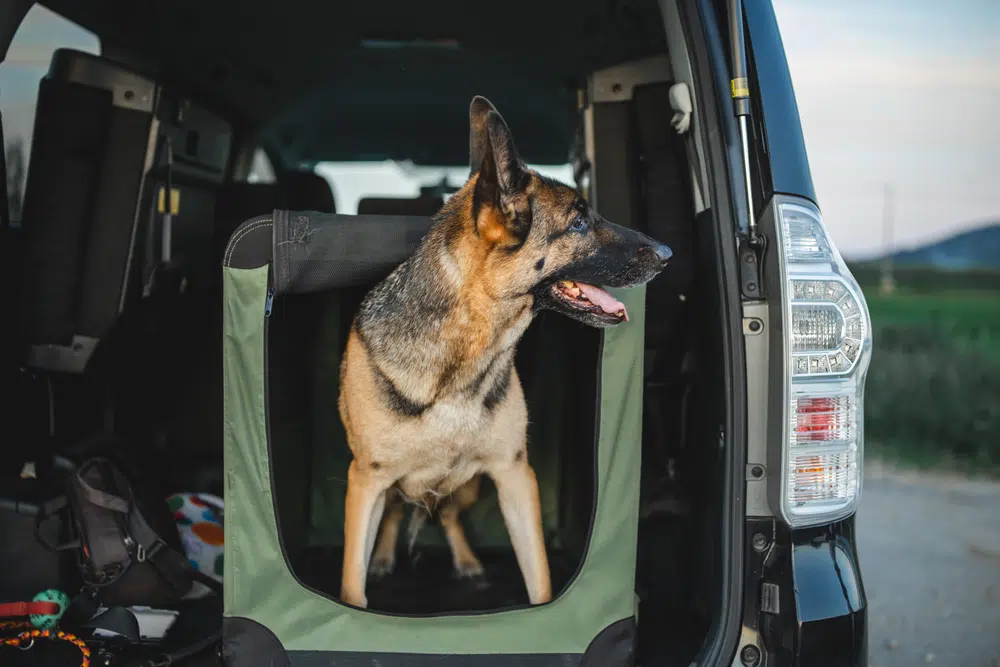
Puppy Crate Set Up
A. Advanced Training Techniques
Refining techniques is crucial as you progress in crate training. Incrementally increasing the time the puppy spends in the crate builds endurance and fosters comfort, allowing the puppy to adapt gradually. Introducing distraction training is essential; it teaches the puppy to remain calm and composed amidst distractions, reinforcing desired behaviors. Enhancing reward-based training with more varied and valuable rewards continues to reinforce positive behavior, making the crate a pleasant space for the puppy.
B. Troubleshooting Common Issues
Addressing and resolving common issues are pivotal for maintaining progress in crate training. Finding solutions for excessive whining or barking is essential to ensure the puppy’s comfort and reduce stress levels. Implementing encouraging strategies is vital when the puppy shows reluctance to enter the crate, fostering a sense of security and willingness. Strengthening crate security and addressing any escape attempts promptly are crucial to maintaining safety and preventing potential accidents or injuries.
C. Socialization and Crate Training
Ensuring proper socialization while maintaining consistent crate training is a balancing act. Carefully introducing the puppy to new people and other pets is crucial to avoid overwhelming them and to foster positive, stress-free interactions. Maintaining a balance between socialization opportunities and consistent crate training schedules is essential to avoid overstimulation and ensure the puppy develops well-rounded social skills, contributing to their overall well-being and behavioral development.
D. Health Considerations and Crate Training
Regular health monitoring is indispensable during the advanced stages of crate training. Scheduling regular veterinary check-ups and addressing any arising health concerns immediately is paramount to the puppy’s well-being. Early detection and prompt address of health concerns prevent complications and ensure that the crate training process is not adversely affected, maintaining the overall health and happiness of the puppy.
E. Transitioning Out of the Crate
As the puppy matures and develops, transitioning out of the crate becomes an important consideration. Employing gradual transition strategies and keenly observing for signs of readiness ensure a smooth and stress-free transition to more open spaces. This gradual approach allows the puppy to adapt to new freedoms and responsibilities, ensuring their comfort and security as they explore more of their environment.
F. Maintaining a Positive Crate Experience
The journey doesn’t end with successful crate training; maintaining a positive association with the crate is an ongoing process. Continual positive reinforcement and regular maintenance of the crate environment are vital to sustaining the crate as a positive and comfortable space for the puppy. Regular adjustments to the crate setup, based on the puppy’s evolving needs and preferences, are crucial to maintaining a positive and enjoyable crate experience.
In conclusion, employing advanced training techniques, effectively troubleshooting common issues, balancing socialization with crate training, considering health implications, transitioning out of the crate, and maintaining a positive crate experience are all integral to the advanced stages of crate training. These strategies and considerations ensure the holistic development and well-being of the puppy, fostering a harmonious and loving relationship between the puppy and the owner.
Part 5: Sustaining Crate Training Success and Long-Term Considerations
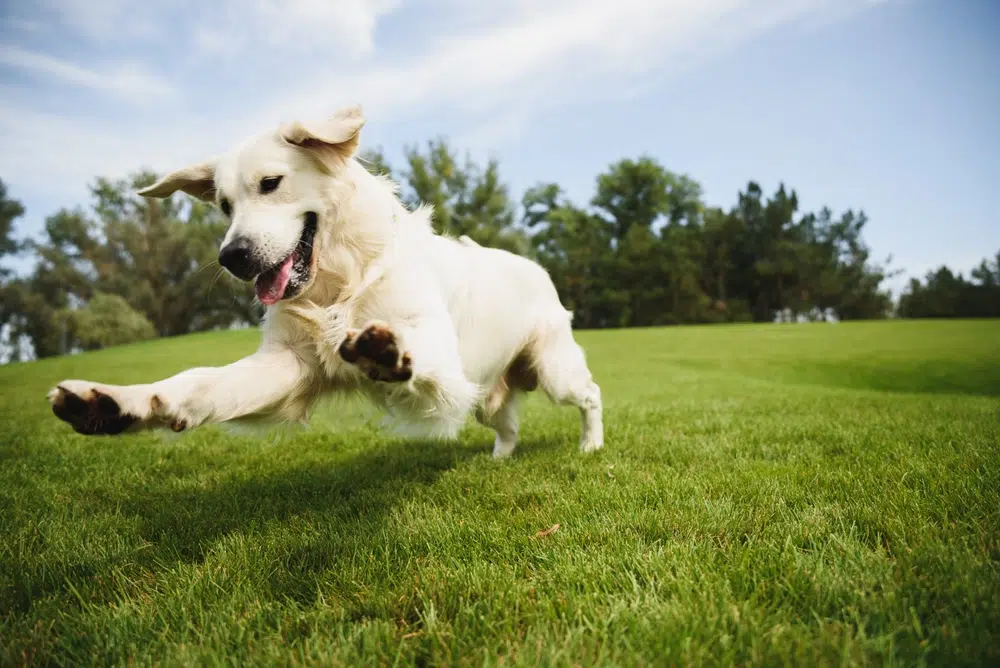
Puppy Crate Set Up
A. Sustaining Crate Training Success
Maintaining the success of crate training requires diligence and consistency. Regular positive reinforcement is crucial, reinforcing the puppy’s positive associations with the crate. Routine maintenance and cleaning of the crate are essential to ensure it remains a safe, comfortable space. Continuous observation allows for immediate adjustments to be made based on the puppy’s behavior and comfort levels, ensuring the crate remains a positive and secure environment.
B. Long-Term Crate Usage Considerations
As the puppy grows, it’s vital to balance crate time with free time to foster independence. Thoughtful considerations and adaptations in crate usage are essential as the puppy transitions to adulthood, preventing dependency on the crate. Regularly adjusting the crate size is indispensable to accommodate the growing puppy, ensuring ongoing comfort and safety. It’s crucial to monitor the puppy’s response to increased freedom and adjust the crate time accordingly to maintain balance.
C. Behavioral and Emotional Well-being
The emotional well-being of the puppy is a cornerstone of successful crate training. Promptly addressing any behavioral changes or signs of distress is vital to maintaining a stress-free crate environment. Building and maintaining trust and security within the crate are foundational in strengthening the bond between the owner and the puppy. Regular interactions and positive reinforcements within the crate environment play a significant role in fostering emotional well-being and positive behavior.
D. Advanced Crate Training Recapitulation
Recapitulating advanced crate training techniques and strategies is beneficial for reinforcing learned behaviors. Reflecting on the progress and setting future developmental goals are pivotal for the continued growth and learning of the puppy. Acknowledging the achievements and milestones reached in crate training provides motivation and clarity for future training endeavors, allowing for a structured approach to ongoing training and development.
E. Crate Training and Lifestyle Integration
Seamless integration of crate training into the daily routine and lifestyle is crucial for maintaining harmony. Flexibility and adaptation in crate training strategies are essential to accommodate the evolving needs and changes in the lifestyle of both the puppy and the owner. This adaptive approach ensures a cohesive coexistence, allowing the puppy and the owner to synchronize their routines and expectations, fostering mutual understanding and respect.
F. Community and Support
Community support and shared experiences are invaluable resources in the crate training journey. Actively seeking advice and sharing experiences with other puppy owners facilitate mutual learning and support, enriching the crate training experience. Engaging with communities and forums provides diverse perspectives and solutions, allowing for a more informed and enriched approach to crate training.
In conclusion, the journey of crate training extends beyond the initial stages, involving sustained efforts, long-term considerations, emotional well-being, continuous learning, lifestyle integration, and community engagement. These multifaceted components contribute to the holistic development of the puppy, fostering a loving and harmonious relationship between the puppy and the owner, and ensuring the long-term success and benefits of crate training.
Part 6: Frequently Asked Questions and Conclusion
Q1: How long should a puppy be kept in a crate?
A: Puppies should only be created for a short period, typically up to 5 hours. The duration can be gradually increased as the puppy grows and becomes accustomed to the crate.
Q2: Is it cruel to crate train a puppy?
A: No, when done correctly, crate training is not cruel. It provides a secure, safe space for the puppy and can aid in house training and preventing destructive behavior.
Q3: Can crate training help with separation anxiety?
A: Yes, crate training can help manage separation anxiety by providing a secure and comforting space for the puppy when the owner is away.
Q4: How can I make the crate more comfortable for my puppy?
A: Adding soft bedding, a crate cover, a stuffed toy, and items with the owner’s scent can make the crate more comfortable. Regular cleaning and maintaining a positive environment are also crucial.
Q5: Should the crate be covered at night?
A: Covering the crate can create a den-like environment and can be comforting to some puppies. However, some may prefer it uncovered. Observe your puppy’s preference.
Q6: How do I know if my puppy is ready to spend less time in the crate?
A: Signs of readiness include reduced anxiety when left alone, no destructive behavior, and being fully house trained. Gradual transition and observation are key.
Q7: What should I do if my puppy whines or barks excessively in the crate?
A: Addressing the puppy’s needs, ensuring comfort, and using positive reinforcement can help. If the behavior persists, consider seeking advice from a veterinarian or a professional trainer.
Q8: How can I balance crate time with socialization opportunities?
A: Integrating socialization activities into the daily routine while maintaining consistent crate training schedules is essential. Regular interaction with various people and pets can aid in balanced social development.
Q9: Can adult dogs be crate trained?
A: Yes, adult dogs can be crate trained using similar principles as puppies. Patience, consistency, and positive reinforcement are key components in crate training adult dogs.
Q10: How often should the crate be cleaned and maintained?
A: Regular cleaning is essential to maintain hygiene. The frequency depends on the individual dog, but a weekly cleaning is generally a good practice for many dogs. Regular inspection for damages and potential hazards is also crucial.
Q11: Is it necessary to continue crate training into adulthood?
A: It depends on the individual dog’s age and owner preference. Some dogs continue to use crates as a safe space in adulthood, while others may no longer need it.
Q12: Can crate training aid in addressing behavioral issues?
A: Yes, crate training can be a useful tool in managing and modifying certain behavioral issues by providing structure, routine, and a sense of security to the dog.
Final Thoughts of Puppy Crate Set Up
Crate training is a multifaceted approach to raising a puppy that extends beyond merely providing a confined space. It’s a holistic journey that encompasses the puppy’s physical, emotional, and behavioral development, aiming to create a harmonious and balanced coexistence between the puppy and the owner. This comprehensive guide has delved into the intricate aspects of crate training, from the initial setup and considerations to advanced training strategies and long-term considerations.
We’ve explored the foundational elements of setting up a puppy crate set up, emphasizing the importance of choosing the right crate, positioning it correctly, and ensuring it’s a comfortable and secure environment. The role of consistency, patience, and positive reinforcement has been highlighted as pivotal in establishing a positive association with the crate and fostering a sense of security and comfort for the puppy.
Advanced training techniques and troubleshooting have been discussed to address common issues and enhance the crate training experience. The importance of balancing socialization with crate training, ensuring the emotional well-being of the puppy, and addressing any behavioral changes promptly has been underscored to maintain a stress-free and positive crate environment.
Long-term considerations, including sustaining crate training success, adjusting crate usage as the puppy matures, and integrating crate training into daily life, have been elaborated to provide a roadmap for the continued success and benefits of crate training. The value of community support, shared experiences, and professional advice have been highlighted as invaluable resources in navigating the challenges and enriching the crate training journey.
In conclusion, crate training is not a one-size-fits-all solution but a dynamic and evolving process that requires dedication, understanding, and adaptability. Rather, it’s a journey of mutual growth, learning, and bonding between the puppy and the owner, contributing to the development of a well-rounded, secure, and happy dog.
Interesting Reads:



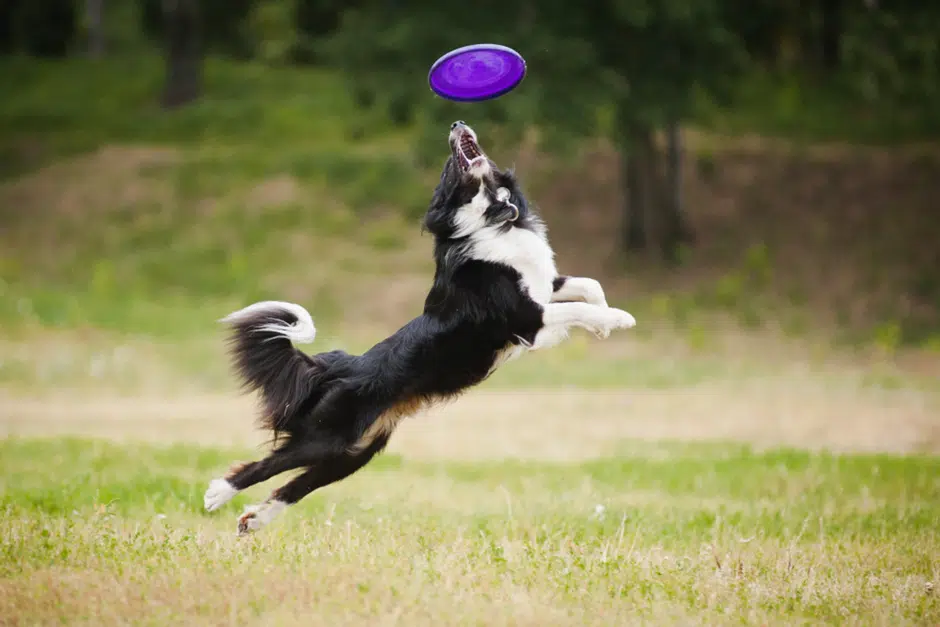
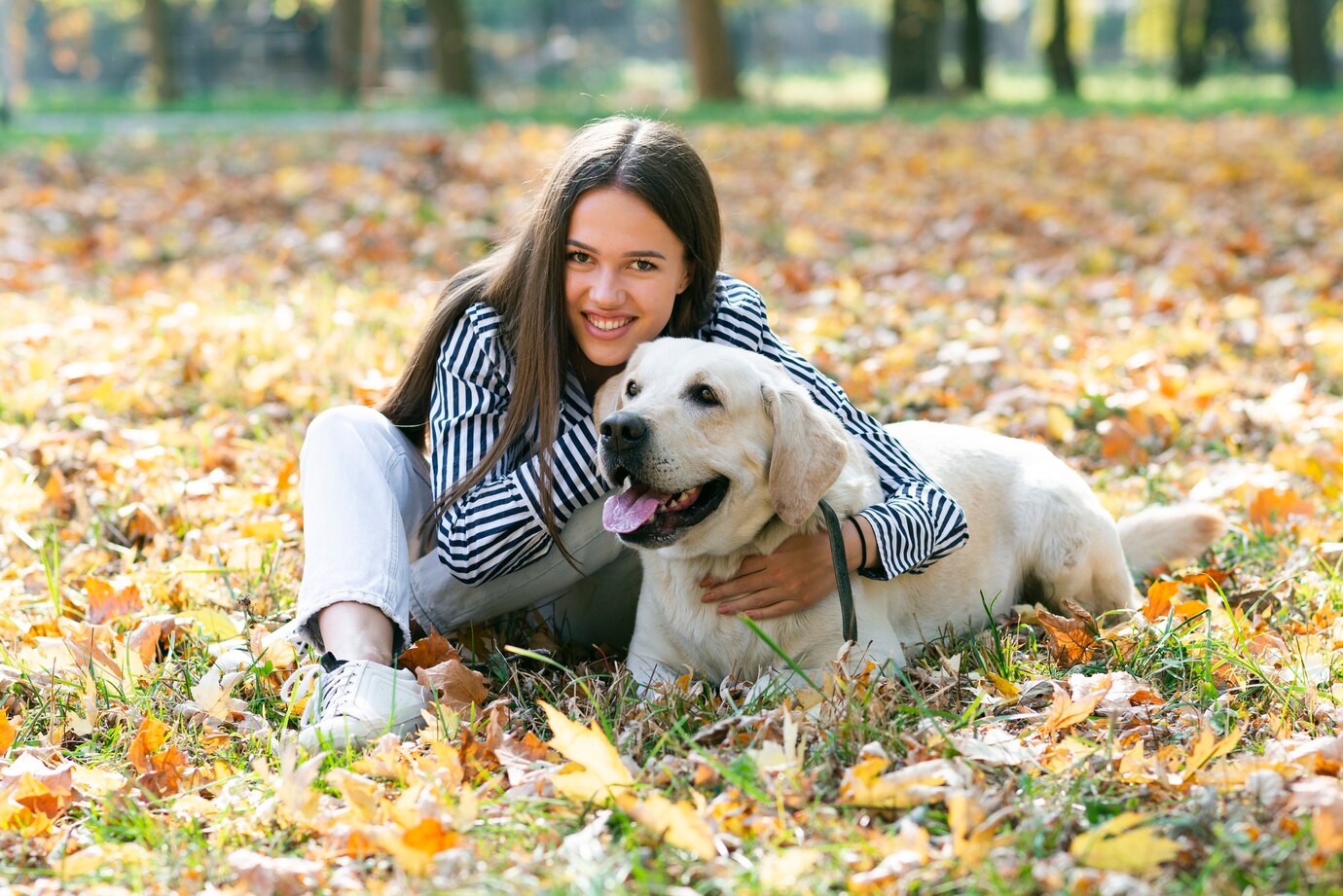
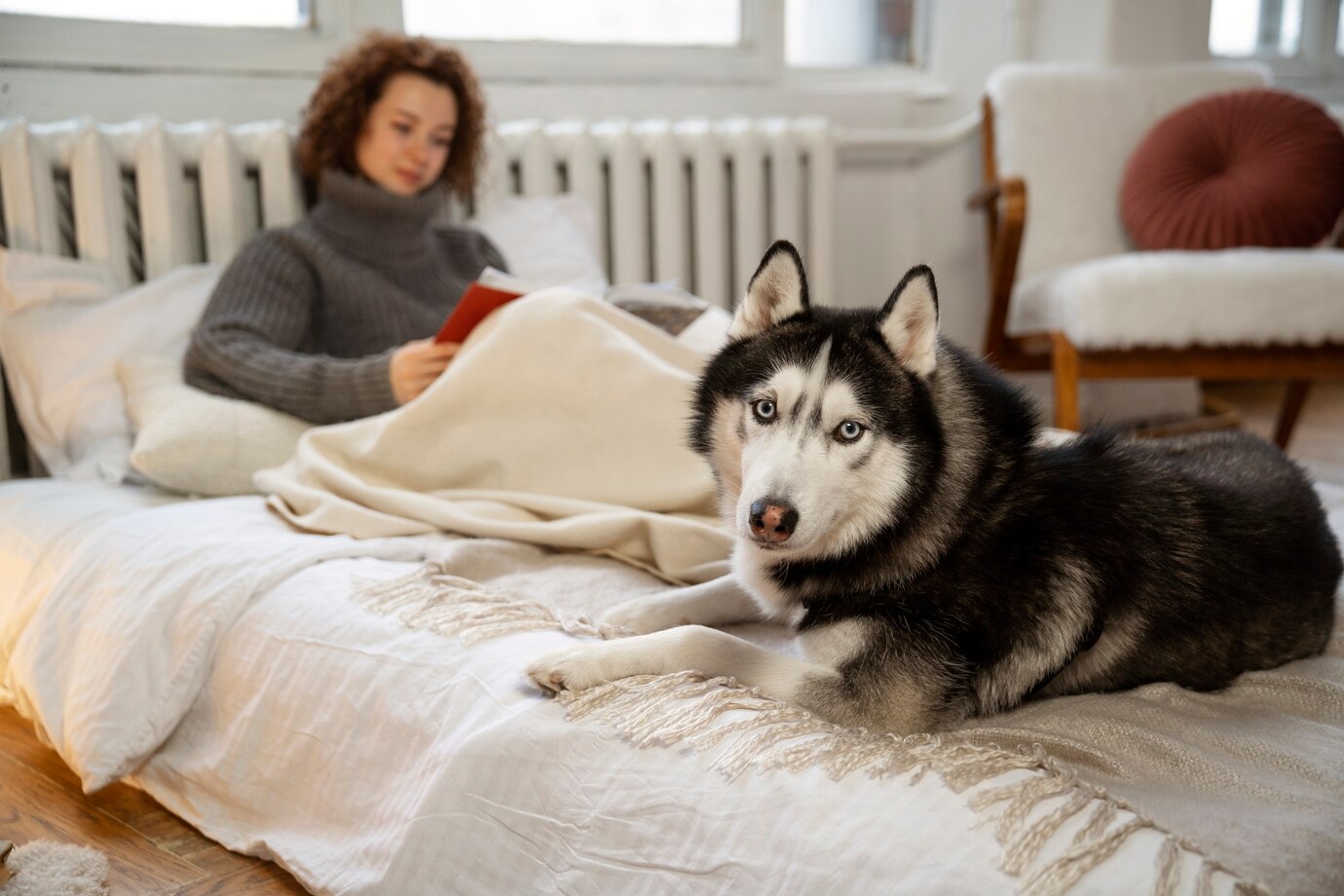



Get involved!
Comments